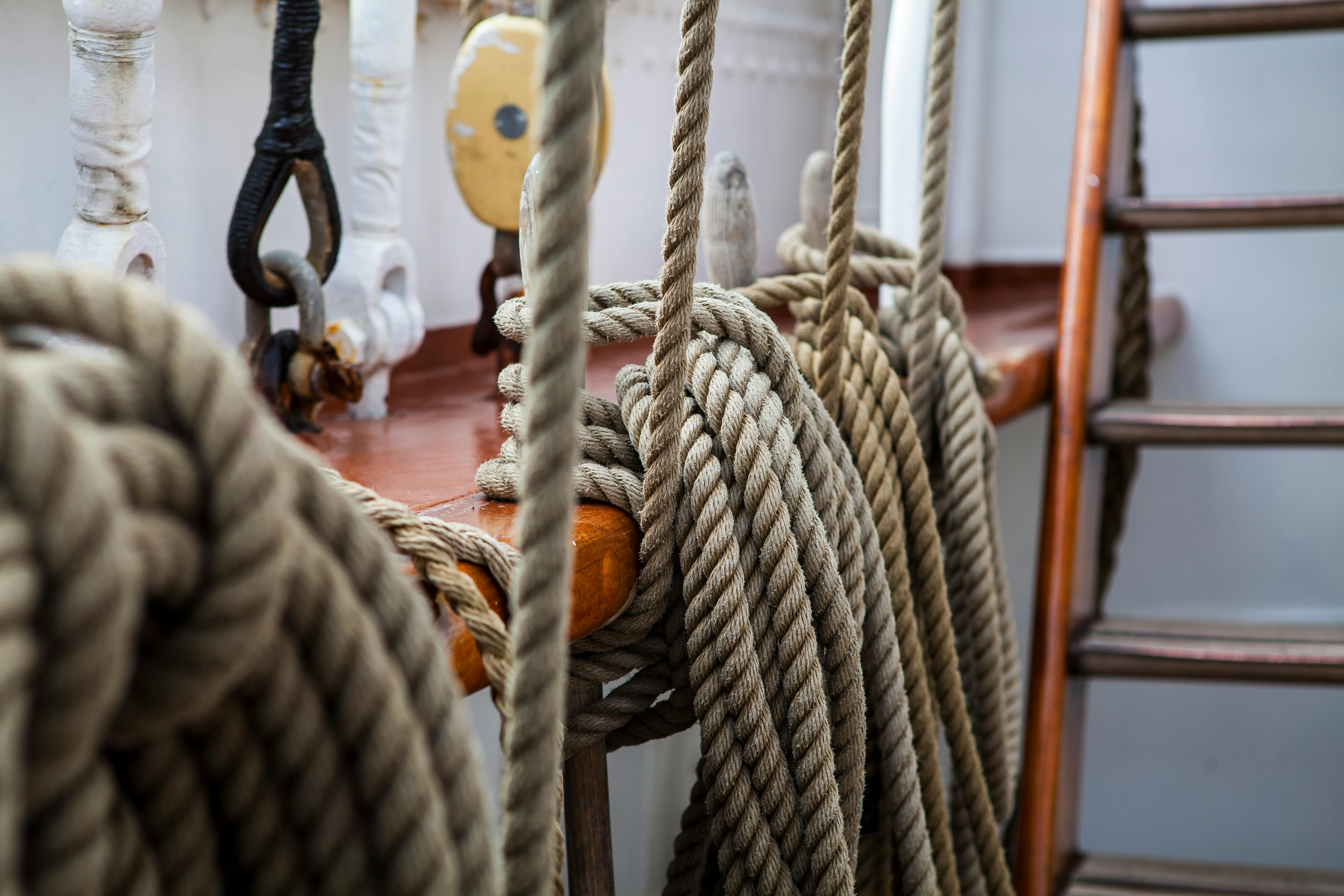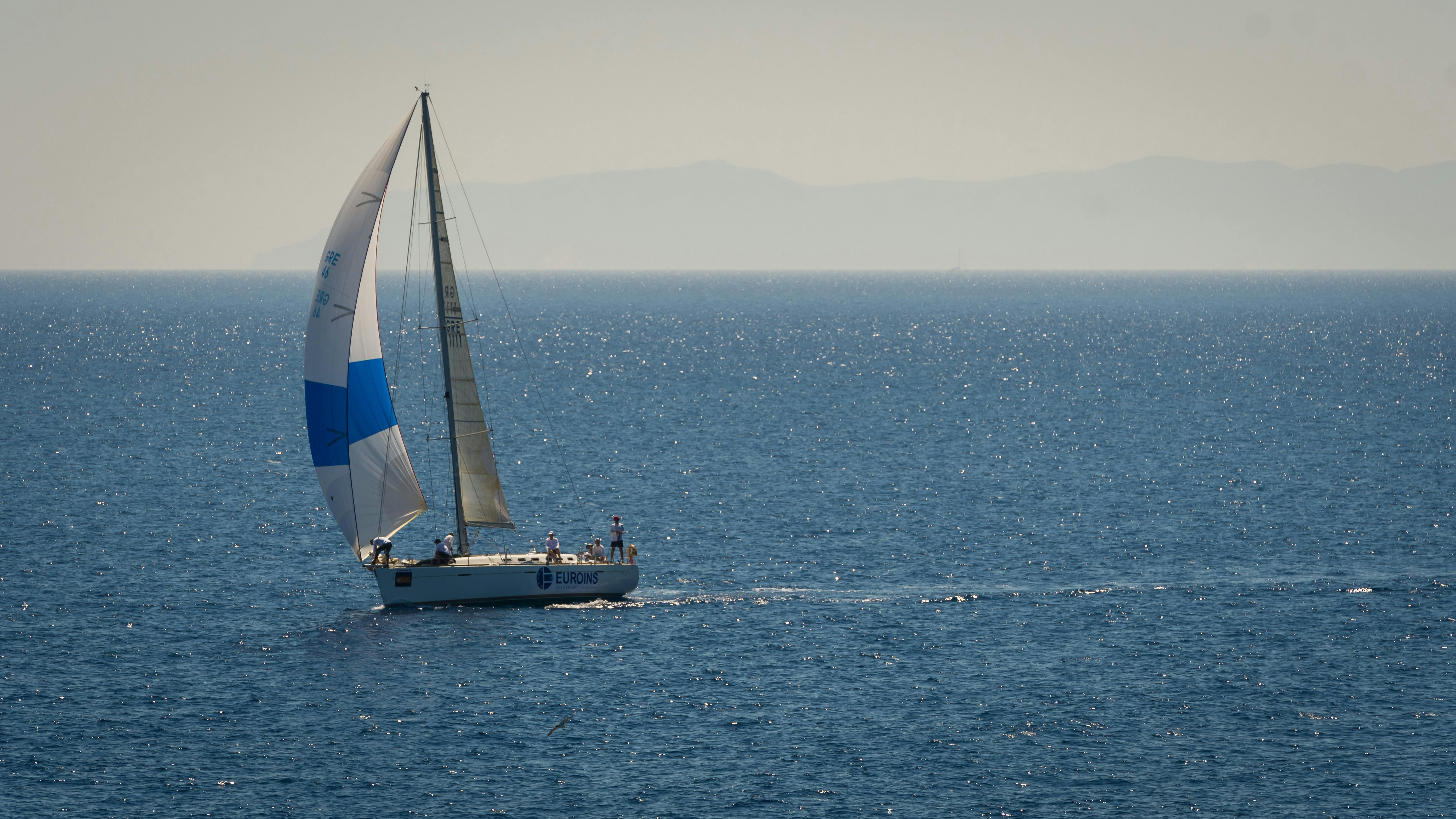5 Fundamental Sailboat Rules for Beginners
According to a recent survey, there are more than 3.5 million sailing participants in America. More than 8 hundred thousand Americans sail 15 or more times each year.
Sailing attracts all kind of people; racers, adventurers, cruisers, or even just people who love the feel of the sun and the wind on their face as they glide over sparkling blue ocean waters. Sailing is a good way to relax and enjoy calm sunny days.
However, to enjoy yourself on a sailboat, you must know basic sailing rules including sail positions, maneuvers, and rules for the waterway. It is also important to know the equipment you are allowed to bring onboard and what you should leave on the shore as mentioned in the coast guard laws.
Sailing Basics:
Before you can launch your boat into the waters you need to be able to understand the basic principles of sailing. The fundamental theory behind a sailboat is harnessing the power of the wind to propel your vessel over the waterways.

You must understand the basics of wind physics and what makes the boat move in specific directions. This way you will be able to direct your boat properly and predict the effect of different wind movements.
Fundamental Rules of Sailing:
Although it can take years before a person can become an expert in sailing, the basic of sailing is quite easy. There is a right way to do everything and following these rules is important to avoid boating accidents and ensure the safety of other boats that you came in contact with.
Here are a few important rules that you should follow for a smooth sailing experience:
Master The Rudiments:
Whether you are sailing on an enclosed lake or on the open seas, you need to know the basic sailing maneuvers. Jibing and tacking are terms for basic sailing maneuvers which can take you into the wind or away from it. Master these before trying more advanced techniques. Also, learn the necessary nautical terms and understand how all the equipment on your boat works.
Keep A Sharp Lookout:

When sailing the open water, people tend to forget that there might be other boats or any debris in the water which might cause damage or sailing accidents. Maintaining a sharp lookout at all times can help you avoid colliding with other boats.
Sail Under Safe Speeds:
Once you are out on the open waters, you might give in to the impulse and go faster. While it can be exhilarating to fly over the waters, the higher the speed the more difficult it is to keep your boat under control. Large waves might cause the boat to capsize if you’re saling at high speeds.
Master The Water Traffic And Steering Rules:
All sailboats are required to follow the steering rules as specified by the International Collision Regulations for Preventing Collisions at Sea. These apply to all kinds of water vessels including sailboats, large or small yachts, and power boats.For example;
- The overtaking vessel must keep clear.
- Port tack gives way to starboard tack and leeward over Windward when two vehicles are approaching each other.
- Keep close to the outer edge when passing through a narrow channel.
- Recreational boats such as sailboats and yachts should give way to commercial water vessels.
- Powerboats should give way to sailboats sailing under sails and not using its motor.
Keep Calm In Case Of Emergencies:
The sea and open water can be quite unpredictable. Most sailboat accidents aren’t life-threatening and it all depends on how the person sailing it acts in an emergency.
It’s important to use common sense and to stay calm while dealing with any issue that might arise.
Essential Sailing Terminologies for Beginners:
It is also important to familiarize yourself with the essential sailing and nautical terms. Here is a list of handy terms you need to know before setting sail:
- AFT –the aft is also known as the stern and is a common term used for the back of the ship.
- BOW –The ships front is commonly referred to as the bow. It is important to be able to locate the bow in order to navigate the sailboat.
- PORT –The left-hand side of the boat while you are facing the bow is known as the port. Right and left can be confusing while you are out on the open seas.
- STARBOARD –The right-hand side while facing the bow is called the Starboard.
- LEEWARD –Leeward refers to the opposite direction from the way the wind is blowing.
- WINDWARD –The current direction of the wind is called windward. Sailboats follow the direction of the wind so this is a very important term that sailors must know.
- RUDDER –The rudder is a flat piece of fiberglass, metal or wood that is located underneath the sailboat and is used to steer the ship. It is controlled either via a wheel or a simple lever depending on the size of the sailboat.
- BOOM –A boom is a horizontal pole connected to the main mast of the boat. Sailors adjust the boom according to the wind direction to make the boat sail.
What to Bring On the Sailboat
Whether you are going out for a short spin or spending the day on the waters, a good sailor makes sure the boat contains all the necessary tools and equipment. Maintain a checklist to ensure you are prepared for any eventuality unless you want to be stuck out at sea.
Here is a list of some vital gear your sailboat must have:
- Life jackets for all the crew and guests
- Tool kit and spare parts
- Weather Gear
- Sufficient fuel, bring a little extra just to be sure
- Anchor
- Maps and compass
- Binoculars
- First aid kits
- Nonslip shoes
- Sun protection – sunscreen, hats, and sunglasses.
- Food and water
- Waterproof bags to secure important stuff in case the boats fill up with water.
Apart from this, all sailboats and vessels are required to carry the USCG-required equipment at all times. This includes items such as fire extinguishers, a flare, whistle or fog horn, a VHF radio, and navigation lights among others.

Another important thing to remember is that seasoned sailors always check the weather report before making any water excursions. Even though it might seem like the perfect day, be sure to check out the marine weather forecast to avoid any nasty surprises!
Performance Yacht Sales is one of the best sailboat brokerage companies in Miami. Our listings include luxury sailboats such as the Blue Water Catamaran and the new Hh55 Catamaran. Contact us today to buy any of our gorgeous new or used sailboats!




